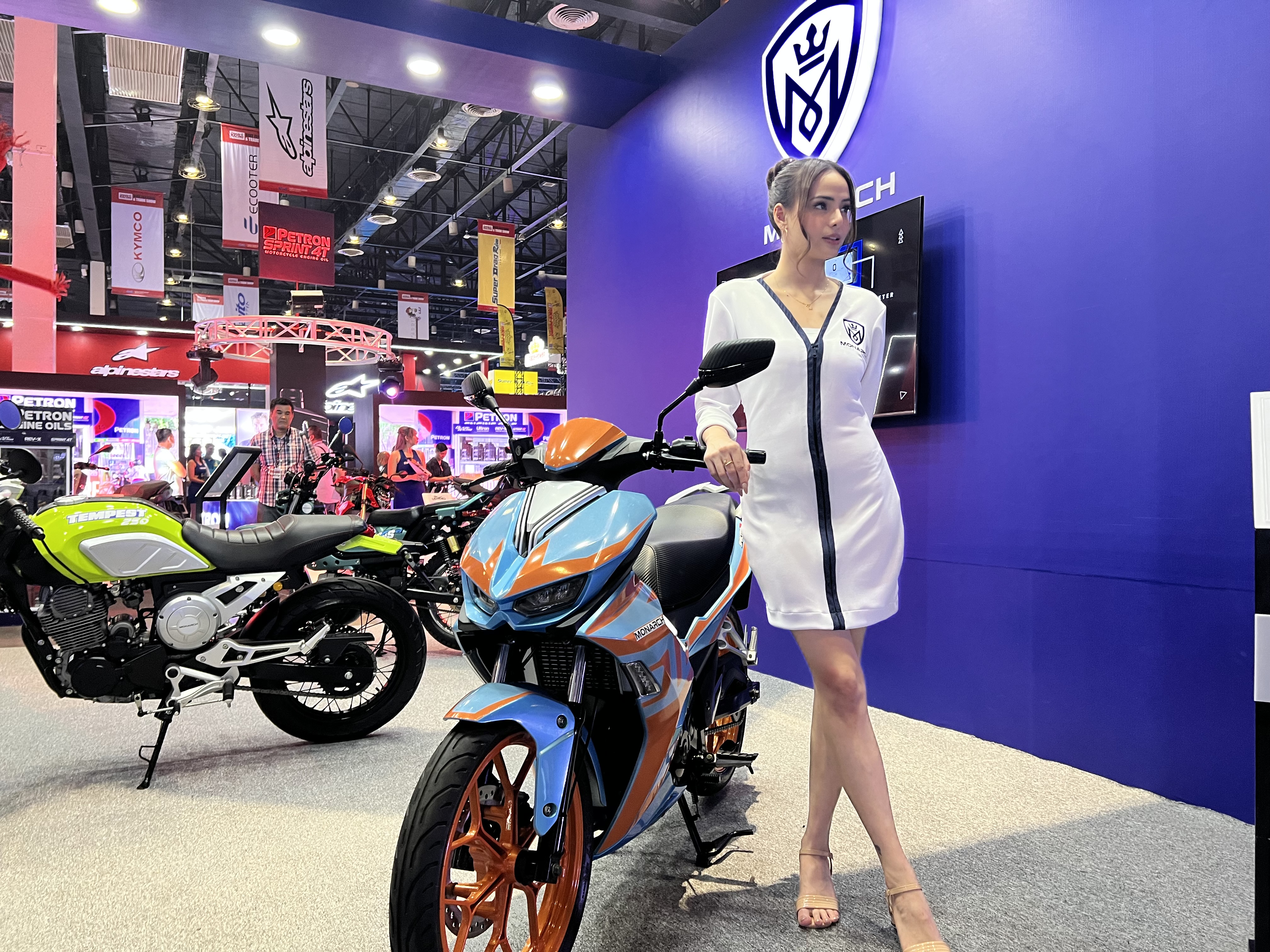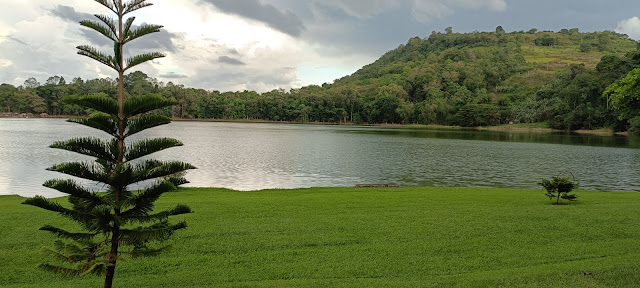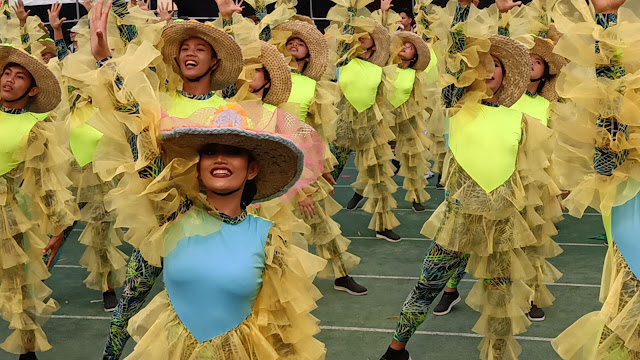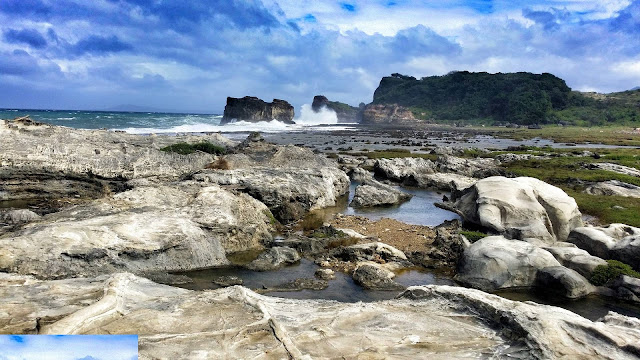THE HEALING IS REAL AT THE PANAMBAL FESTIVAL IN MARIA, SIQUIJOR | MOTOURISMO
Story and Photos by Monch Henares
When I first posted on social media that I was on my way (on assignment) to the mystical island of Siquijor, I received several private messages, mostly from very close friends, warning me to be careful of mystical creatures and not to fall prey to witchcraft and the occult. It is my very first visit to Siquijor and being a devout Catholic at that, I wondered and really thought of what I was about to immerse myself into as a media practitioner. At first, I was wary of the unknown, but later after some self-convincing, I took it as a challenge to my faith and religious beliefs.
To me, all these incredible stories were just hearsay and Filipino folklore told by grownups (probably to keep me from misbehaving) when I was a kid. I never in my life encountered any of these mystical creatures including a Kapre (tall tree demon), Mananangal (a flying body-separating demon), Tikbalang (humanoid horse), Aswang (bat-winged dog-like demon) to name a few.
Many Filipinos who live far from the big cities believe in unconventional healing, but because of the pervasiveness of conventional medicine and the mileage it gets on media, it may seem that it has taken the back seat together with traditional medicine. But folk healing still remains a first choice of treatment for many Filipinos in the provinces, and with the internet filled with discounted plane tickets and boat rides, more and more people will flock to Siquijor, because its mysticism lures them.
That image of witchcraft that the island is usually associated with will definitely remain central to life in this island province and this reputation is prevalent enough to keep superstitious Filipinos from visiting the island. The average Siquijodnon will affirm that times are different now, that modernity has driven the wizardry up to the boondocks and into the past.
Seven Significant Fridays
There are seven Fridays in a year when the faithful group of "mangangalap" (plant collectors) can collect plant parts (potion ingredients) from a wide variety of Philippine flora. They will scour the deep forest, cemeteries, caves, churches, coastlines, and the ocean to find and gather these powerful raw ingredients. This can only be done on seven significant Fridays, starting on the Friday after Ash Wednesday, and ending on Good Friday. These, they say are the days spiritual energy is at its highest and their effectivity most potent.
The Municipality of Maria, Siquijor
The Municipality of Maria was named in honor of the Blessed Virgin Mary to which its coral-stone-walled church bares the name, Our Lady of Divine Providence. It is situated on the east side of the Siquijor island and boasts of beautiful clear-water beaches, marine sanctuaries, lush green mountains, waterfalls, zero waste management, an all-female police force, and an almost zero-percent crime rate.
 |
| One of many beautiful clear-water beaches and marine sanctuaries in Maria, Siquijor. |
 |
| Our Lady of Divine Providence Church in Maria, Siquijor |
Maria is led by its very energetic and hands-on mayor, the Hon. Roselyn Asok who is determined to make Maria known to the world as a safe tourist destination and a source of authentic herbal and traditional medicine.
The 1st Panambal Festival
We were invited to cover the very first Panambal Festival and launch. "Panambal" comes from the root word "tambal" (to heal). This happened last April 7-9, 2023 during the Holy Week which was held at the Olang Arts Park (OAP), a 3.5-hectare property in Maria, Siquijor.
The healing festival was the brainchild of Mr. Nilo Agustin, an accomplished tourism consultant to the Department of Tourism (DOT). He is an expert in Philippine heritage and history and was the brains behind and creator of several successful and still ongoing popular festivals around the country.
Planning this huge endeavor with him were Eufemia "Minnie" Solomon Crouse (owner of OAP) represented by Anna Lacpao Tabujara Cornelia - Resident Artist and Olang Arts Park Manager, Hon. Roselyn Asok - Mayor of the municipality of Maria, and Junel Tomaroy - President of Siquijor Healers Association. Tomaroy is considered to be the most reputable "mananambal" (traditional healer) on the island.
Ceremonial Launches
Gracing the opening event was the Hon. Roselyn Asok, Mayor of Maria, Siquijor, who led the ribbon-cutting ceremony that officially opened the Olang Arts Park - Center for Culture, Heritage, Arts, Nature, and Tourism of Siquijor (CHANTS).
 |
| At the ribbon-cutting ceremony, from left; Municipality of Maria Councilor Alona Arcamo, Mayor Roselyn Asok, Committee on Tourism Councilor Betty Adlao, Acting Chief of Police PCPT Renette Joy Jumuad, and Tourism Officer Aldrin "Braxton" Daguman. |
The ceremony also signified the opening of the Olang Visual Arts Exhibit Hall which showcased the Siquijodnon Artists Exhibit featuring several fine pieces of paintings and carved wooden sculptures mostly depicting healing rituals created by local Siquijodnon artists. Among them are members of the Pahiuli Artists Collective including Junel Tomaroy, Joven Y. Ansing, Vicente C. Looc, Jr., Peter G. Agan, Dubonga Jorom, Louie Gabucan, Malvin E. Lomosad, and Dondon de la Victoria.
 |
| Members of the Pahiuli Artists Collective: (on stage) Junel Tomaroy, (L-R) Malvin E. Lomosad, Vicente C. Looc, Jr., Peter G. Agan, Jerom Dubongco, Joven Ansing |
 |
| Siquijodnon Artists Exhibit features several fine pieces of paintings and carved wooden sculptures mostly depicting healing rituals. |
Pleasurable euphonious music performed by the very youthful Olang Arts Park Orchestra (OAPO) filled the exhibit hall. Most of the seasoned members of the OAPO played their very first note and trained at the hall at a very young age.
 |
| Olang Arts Park Orchestra (OAPO) |
The Herbarium Program was also launched that day. Siquijor is home to 377 herbal plant species and these are all indigenous to the island. The main objective of the program is to develop an area inside Olang Arts Park into a Herbarium that could house most of, or hopefully all the herbal plant species available. It could be the one-stop-shop for herbal medicine and maybe earn the distinction of the Herbarium Island in Asia.
 |
| The Herbarium Program |
Also launched was the Health and Wellness Hub -Duyan ng Karunungan. The Olang Arts Park in the Municipality of Maria will be the perfect venue for healing on the island, where "mananambals" or healers can use the different peaceful, quiet, and restful areas conducive to conducting traditional healing. And to cap it off, a forest-type atmosphere where visitors can enjoy the Mahogany woods, and be grounded and in sync with nature.
 |
| The Health and Wellness Hub -Duyan ng Karunungan |
Pag-adlip on Holy Friday
On Good Friday, our lead mananambal (traditional healer), Junel Tomaroy performed “Pag-adlip” or the chopping of the “sangkap pahi-uli” or the barks, roots, twigs, and branches of medicinal plants and trees that are cut into tiny pieces ready for “Pag-uling” (charcoaling). Tiny pieces of each plant are collected and placed into several paper bags. These bags of flora gold will be shared with anyone in attendance that day. I, for the experience, chopped and cut my own loot for my personal use.
 |
| Mayor Roselyn Asok helped with the pag-adlip and exhibited her chef-like chopping skills. |
Junel mentioned some of the plant branches by their local names such as tagnipas, palihuling, duguan, tabun-hangin, etc. He also mentioned that most are restoration (healing) plants. We can find other ingredients in forests, caves (stalactite, soil, etc.), the ocean (corals, starfish, sea anemone, sea cucumbers, sea snake, pufferfish, jellyfish, octopus, etc.), and the church (holy water, flowers, candles, etc.).
 |
| Restoration plants (pahi-uli), vital ingredients for healing oils |
This collection should be placed into a bottle and soaked in "lana" (virgin coconut oil). Lana is the commanding agent that releases the healing powers of each collected plant and is the essential ingredient in most of the potions. We were told that the lana would be made on Easter Sunday.
Black Saturday
Junel started Black Saturday with two interesting processes. First was the "pag-uuling" (charcoaling), where the remaining plant pieces left from the Adlip on Holy Friday are heated up in a large cauldron over a wood-burning fire, and after constant pounding, it becomes a carbonized black powder that will be used for the next process, the "pagmamasa".
 |
| Junel Tomaroy performing "pagmamasa" (making of black wax). |
Second is the "pagmamasa" or preparation of the "minasa" (black wax). Black wax is a mixture of charred botanicals from the "pag-uuling", candle wax, beeswax, charcoal, "kamanyang" (frankincense), "tawas" (alum), "tuba" (coconut wine), honey, lana (virgin coconut oil), "sahig ng langub" (soil from a cave), and other ingredients altogether are put into a large "kawa" (large pot or couldron) and heated up over a fire. It then becomes this potent, soft. waxy paste that can be heated (like incense) over charcoal to create "Palina" (healing smoke or fumigation) for the practice of "Tuob". Tuob is a common Filipino folk remedy for fumigating the body with smoke from burning black wax. Palina smoke is said to cure a variety of ailments and also drives away bad spirits. Minasa is also the main ingredient of a lucky charm amulet.
 |
| Minasa, Black Wax |
Easter Sunday
An Easter Egg Hunt which was open to the public started the celebration early Easter Sunday. A huge turnout of egg hunters of all ages joined in the festivities. I was told by some of the attendees that this was the first time a public Easter Egg Hunt was ever held on the island. The enthusiasm and joy showed on their smiling faces as they searched for colorful Easter eggs and the prized golden egg worth Php500. This was a project initiated and sponsored by Judie Sabac, owner of the Sunrise Cliff Beach House. The event's overwhelming success prompted Judie to say that it will surely happen again next Easter.
 |
| Little Siquijodnons excitedly search for easter eggs and the prized golden egg. |
 |
| (L-R) Easter egg-hunt sponsor and grand martial Judie Sabac with her crew Giovanni and Lybeth. She owns and operates the Sunrise Cliff Beach House, one of the best places to stay in Maria. |
I personally helped make some lana that Easter Sunday. We first had the tedious job (bloddy and dangerous if you are not careful) of scraping off the meat out of mature coconuts with a "pangkayod" (coconut grater) for the "paglalana" (making of virgin coconut oil). Junel mentioned that the most potent coconut comes from the "bugtong na niyog na nakaharap sa silangan" (a lone coconut that grows facing the east). Every batch to be processed must contain an odd number of east-facing coconuts. In "pangkukulam" (witchcraft), lana is made with an even number of west-facing coconuts.
 |
| The process of extracting the coconut cream (kakang-gata). Grate the coconut meat and squeeze out the coconut cream. |
Now that we had a "palangana" (round plastic basin) full of grated coconut meat, we then needed to squeeze out the "kakang-gata" (coconut cream). Kakang gata is the “first extraction” of coconut milk you get from pressing grated matured "niyog" (grated coconut meat). This is done by adding just enough water to the basin and place a handful of the soggy niyog into a strainer, use your hands to squeeze the creamy coconut milk out into a clean basin, then discard the used niyog. We continued the process till the last of the niyog was squeezed dry.
Finally, Junel had what he needed to make lana (the holy grail of healing oils). Only coconut cream should be used for the making of virgin coconut oil. The cream is placed into a cauldron and made to boiled over a fire for about two hours until all the water evaporates and only pure coconut oil or lana is left.
 |
| Pure coconut oil or lana is left after the evaporation process. |
We were each given a good amount of lana that we could take home to fill our bottles of potions with.
Gayuma
"Lumay" or "Gayuma" (Love Potion) is one of the more popular concoctions made on Easter Sunday. Most of its ingredients are taken from floral decorations used for the Easter salubong celebrated in the many churches on the island.
Healers Junel Tomaroy and Ricky Oyog had made some love potions for us guests, but had eliminated pertinent ingredients that would make us "malandi" (flirtatious). The reason being, they insistently want to keep a couple's relationship stable and minimize jealousy and doubt.
 |
| "Lumay" or "Gayuma" (Love Potion) is one of the more popular concoctions made on Easter Sunday. |
 |
| Lumay lucky charm necklace |
One of the healers struck my curiosity that Holy weekend and I just had to get to know more about him. His name is Ricky Oyog, a panambal, originally from war-torn Marawi, Lanao del Sur. He is in his fifties and is physically disabled due to congenital cerebral palsy and atrial septal defect (hole in heart) since birth.
He had a tough life growing up due to his disabilities. He was bullied and teased by his peers, but he managed and made peace with his past when he dedicated his life to God. With a proud big smile, Ricky says, "Alam mo, may asawa ako at apat anak na pinapalaki at pinapaaral namin. Yung panganay ko nga ay nagtatraboho ngayon sa isang coffee shop sa Kuwait". (Do you know, I have a wife and four children that we both are raising and putting to school. My eldest now works in a coffee shop in Kuwait.) "Buhay ako ngayon dahil pinalangin ako ng Diyos ng mga kapangyarihan sa pagpapagaling, at plano ko ipatuloy ang pagtulong sa kapwa tao." (I am alive today, because God has gifted me with the power of healing and I plan to keep helping my fellow man.)
 |
| Healer Ricky Oyog during our haplas session. (Inset) Ricky's healing weapon of choice is a rare perfect-cross branch from an abdao tree that came into his life as a healer while he searched the woods for ingredients to cure a sick child. |
Ricky asked me if I wanted a "haplas" (massage using healing oil) done to my legs and feet as we chatted. I quickly agreed as I wanted to experience his healing ways, and maybe he could remove some intermittent discomfort in my feet and leg that I have been experiencing for weeks. Indeed his touch created a soothing euphoria of painful pleasure that made me forget the body aches I originally felt. It has been a few weeks after that haplas and chat session with Ricky and my feet discomfort is gone. I truly believe that he has healed me.
The island's other traditional healers present during the festival were Daniela Sartin, Gibrint Edd Reyes, Dodong Amboludto, Jomar Enanor, Dean Mark Enanor, Tessie Calimpon, and Delia Bajo.
 |
| Our host and Maria's flamboyant tourism officer (wearing blue hat), Aldrin "Aldrina Braxton" Daguman with members of the media from Manila. |
Our host and Maria's flamboyant tourism officer, Aldrin "Aldrina Braxton" Daguman did a great job in showing us media (from Manila) guests, in a fun and humorous way, the sights and culture of Maria, Siquijor. I guess five days is not enough to capture all the magical splendor of Siquijor Island.
A Doctor of Science in Siquijor
Extensive practices on traditional and alternative healing in Siquijor have brought a distinguished member of the academe to Olang Arts Park in Maria . Dr. Isidro Sia, the executive director of the Integrative Medicine for Alternative Healthcare Systems (INAM) Philippines, representative to the ASEAN Technical and Scientific Committee on Traditional Medicines/Health Supplements, and convenor of Aralan ng Gamutang Pilipino (Philippine Traditional Medicine) was the honorable guest speaker at the first Panambal Festival in Siquijor.
 |
| (L) Dr. Isidro Sia, the executive director of the Integrative Medicine for Alternative Healthcare Systems (INAM) Philippines, representative to the ASEAN Technical and Scientific Committee on Traditional Medicines/Health Supplements, and convenor of Aralan ng Gamutang Pilipino (Philippine Traditional Medicine) with Author Monch Henares |
"Nature is God-given, thus it is sacred. Our health is linked to nature. Nature that is healthy will also keep us healthy," said Dr. Sia during his speech at the event's closing ceremony.
"What I like and respect about the healers here in Olang today, as compared to western doctors in the city, is that they are gracious, generous, caring, and all they want to do is simply serve their fellow man", he adds.
The overall success of the first Panambal Festival has made its impact and most importantly, it places the Municipality of Maria and the island of Siquijor on the world map as the only island for healing. Furthermore, it has established the Olang Arts Park in Maria as a center and all-year-round venue for traditional medicine, and a worldwide source of herbal plants and medicines through its herbariums. Truly, exciting times are ahead for this mystical island in Central Visayas.







.jpg)












Secondly, LDPE sheets are eco-friendly. Although they are plastic products, they can be recycled. Many LDPE sheet manufacturers LDPE sheet manufacturershave initiatives in place to recycle these materials, contributing to sustainability efforts in the industry. Their recyclability makes them a responsible choice for businesses committed to reducing their environmental impact.
ReplyDelete